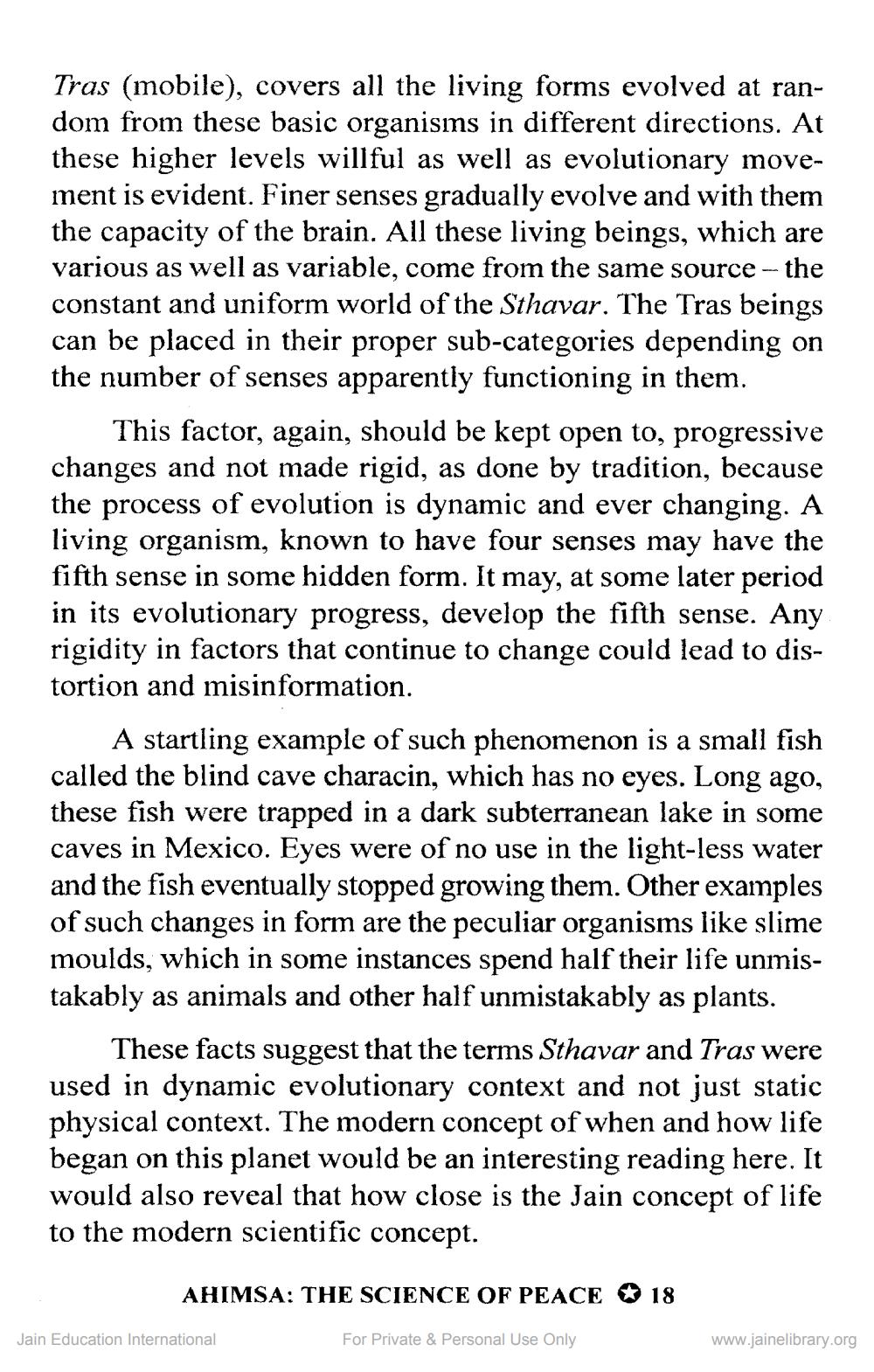________________
Tras (mobile), covers all the living forms evolved at random from these basic organisms in different directions. At these higher levels willful as well as evolutionary movement is evident. Finer senses gradually evolve and with them the capacity of the brain. All these living beings, which are various as well as variable, come from the same source - the constant and uniform world of the Sthavar. The Tras beings can be placed in their proper sub-categories depending on the number of senses apparently functioning in them.
This factor, again, should be kept open to, progressive changes and not made rigid, as done by tradition, because the process of evolution is dynamic and ever changing. A living organism, known to have four senses may have the fifth sense in some hidden form. It may, at some later period in its evolutionary progress, develop the fifth sense. Any rigidity in factors that continue to change could lead to distortion and misinformation.
A startling example of such phenomenon is a small fish called the blind cave characin, which has no eyes. Long ago, these fish were trapped in a dark subterranean lake in some caves in Mexico. Eyes were of no use in the light-less water and the fish eventually stopped growing them. Other examples of such changes in form are the peculiar organisms like slime moulds, which in some instances spend half their life unmistakably as animals and other half unmistakably as plants.
These facts suggest that the terms Sthavar and Tras were used in dynamic evolutionary context and not just static physical context. The modern concept of when and how life began on this planet would be an interesting reading here. It would also reveal that how close is the Jain concept of life to the modern scientific concept.
AHIMSA: THE SCIENCE OF PEACE
18
Jain Education International
For Private & Personal Use Only
www.jainelibrary.org




